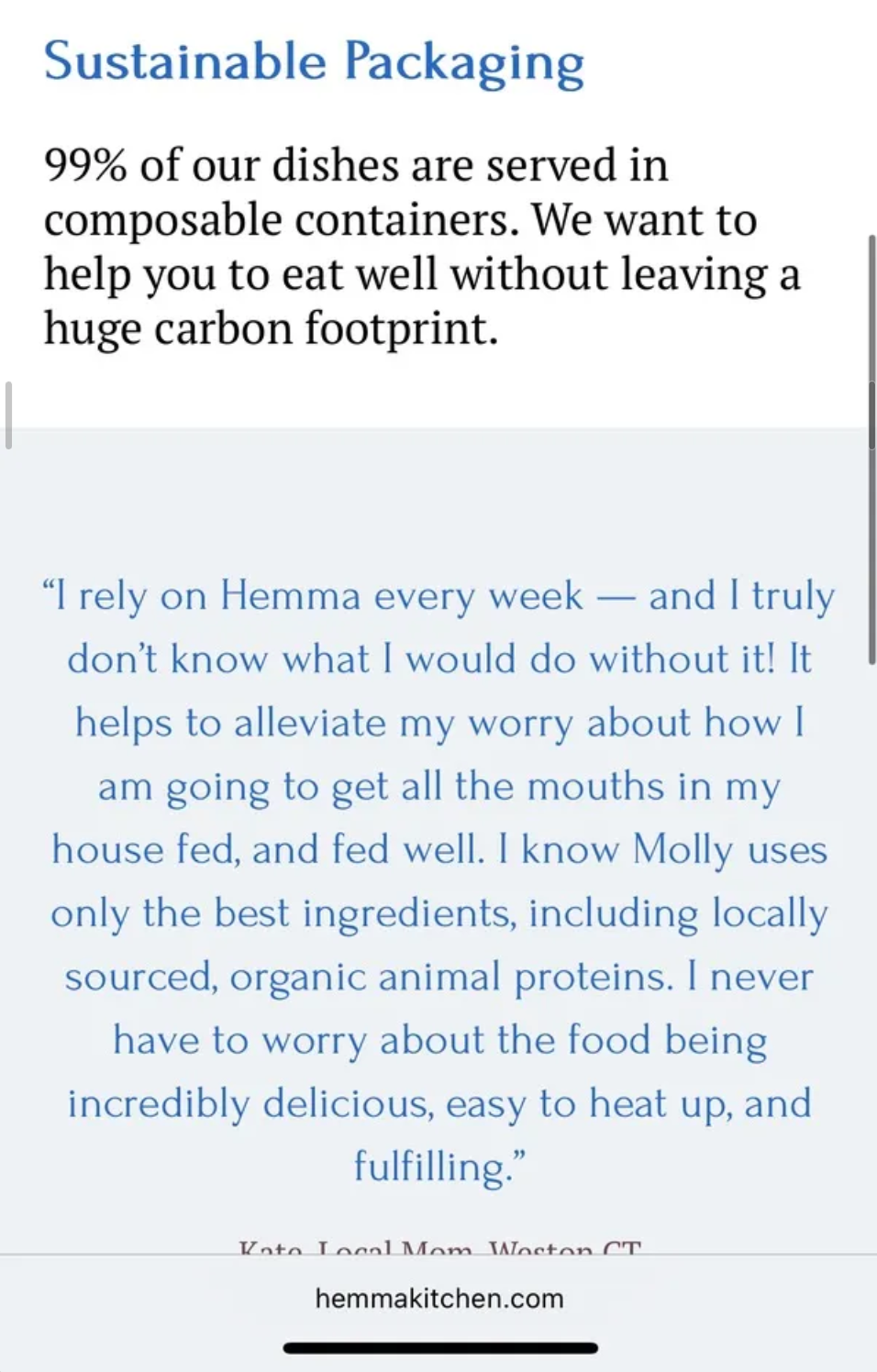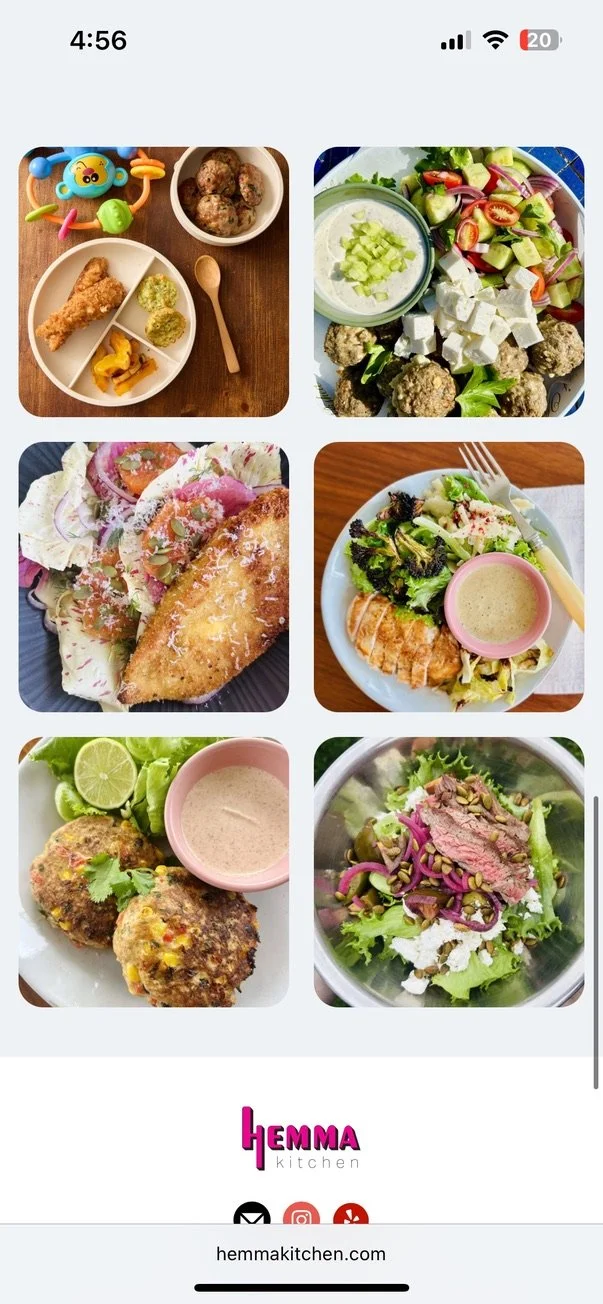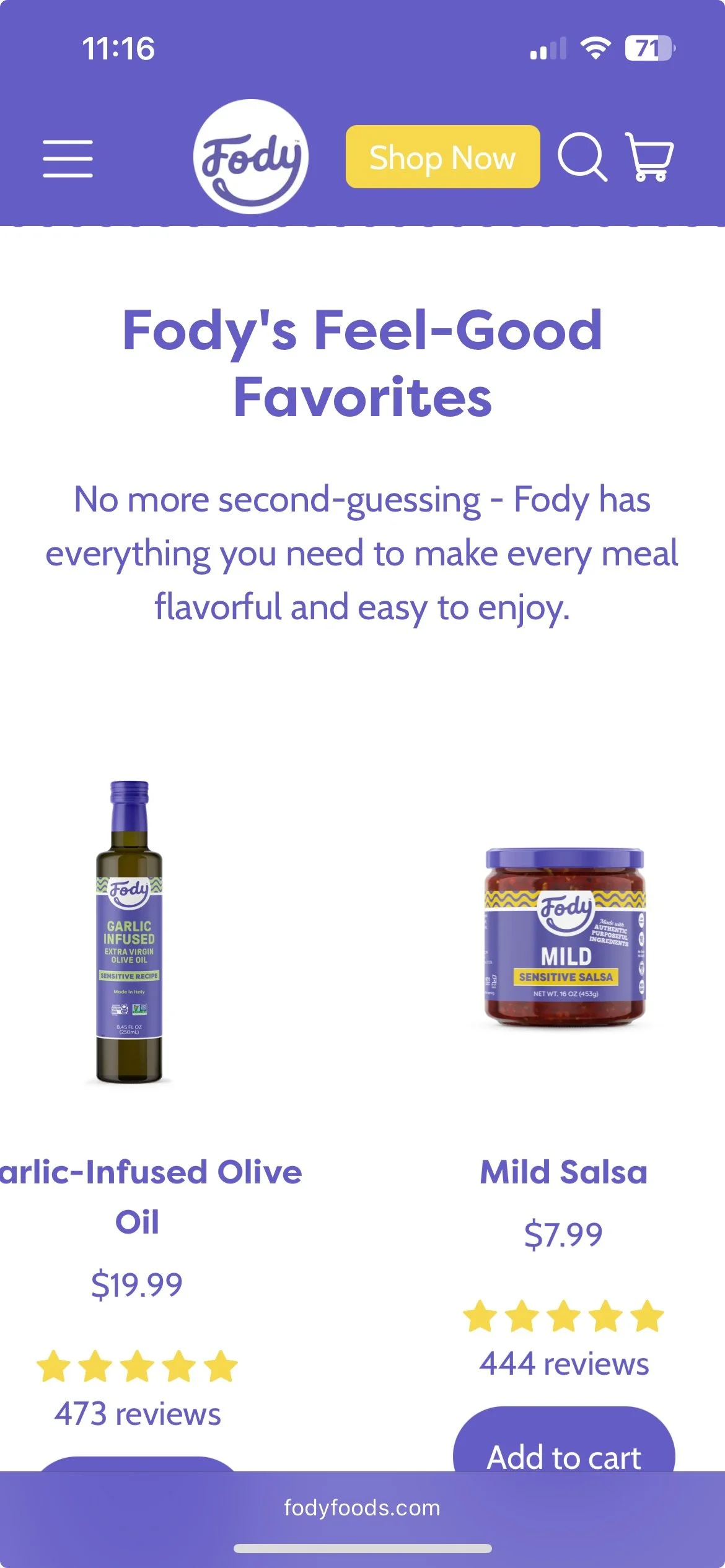A Messaging Teardown (feat. the Four Question Scroll Test)
A good old fashioned Messaging Teardown for a good old fashioned July 4th weekend.
There’s a good chance you’re knee deep in fireworks and bar-b-q’s and being goofy with your friends or your kids and I wouldn’t dream of stepping on the toes of this weekend with anything too serious.
So, let’s do something fun. A messaging teardown. Using the four questions that’ll make whatever you’re putting in front of your customer compelling or forgettable.
Sit back, take a slug of your raspberry lime spindrift, and let’s see how well two companies get across that ever important differentiator. And, as always on July 4th, watch out for bees.
The Contestants
Two companies new to my life.
The first is a company that delivers a batch of super healthy, prepared meals to busy families once a week. As a person with a busy (growing) family who tries to eat healthy, this speaks directly to me.
The second company is an IBS friendly, low FODMAP food company designed for people with sensitive stomachs. I’m knee-deep in a FODMAP cleanse (what a drag it is getting old) to see what I’m sensitive to, so they speak directly to me, too.
Each of these companies is capable of owning a niche, building trust, and converting customers at a high level.
And here are the four questions they'll need to answer:
What problem are they solving?
Are they solving it specifically for me?
What’s the swap? What does this replace that I currently do?
What’s the immediate risk I feel?
Let’s see how they do.
As always, we’ll rate the landing pages based on screenshots from my phone. At least 85% of your traffic will be mobile, so that’s what we design for and judge.
We’ll start with the first two questions that gauge the effectiveness of a site. These are the questions our brains naturally ask when we bump into something new.
What problem are they solving?
Are they solving it specifically for me?
In the first ~six seconds a customer will decide whether to keep reading or leave based on those two questions. What problem are they solving is the way our brains structure the “what are they making?” question - our brains think in terms of problems we have, not products.
Once we’ve wrapped our heads around the broader problem, we look for clues that it’s a solution to our specific flavor of that problem.
So,
What problem are they solving? I think the problem of getting real, healthy food delivered in Fairfield County
Are they solving it specifically for me? Unclear.
Scroll likelihood? 65% - the picture is doing a lot of heavy lifting. On we go.
Opportunity #2 to answer the two initial question, plus the third question that arises once you get context on the first two.
What problem are they solving? Making a wide range of healthy food that tastes good.
Are they solving it specifically for me? Unclear. It seems like it’s flexible, so it might be for me?
And question 3:What’s the swap? What does this replace that I currently do? Unclear.
Scroll likelihood? 85% - getting bleak.
Onward.
Alright! Now we’re talking.
What problem are they solving? The testimonial is helping. It seems like this is solving the “I don’t have time to cook during the week” problem for people who want super healthy food.
Are they solving it specifically for me? Again, the testimonial is helping - high end, organic, local ingredients. If that’s what I want, then it’s for me.
What’s the swap? What does this replace that I currently do? This replaces you cooking dinner during the week. I think.
Now, this is where the fourth question pops up. The risk:What’s the immediate risk I feel? This will be different for different customers. You need to know what it is for your best customers and alleviate it. Maybe it’s delivery times or serving sizes or kid appropriate. The testimonial potentially addresses it - easy to heat up and filling.
The lesson, as always, your best customers will be able to market your product better than you. Let them help you.
The last bit of Hemma is a picture scroll of delicious food. The “social proof” section. They nail it.
Ok! I’d give Hemma a C+. Took a while to answer the first few questions, but they had enough inclusive language - hitting on organic, local, etc. - to get their customer interested.
This could be dramatically improved if they focused on one type of customer. Trying to target both the “live alone and need protein” and “parent” customer will just water down your messaging.
If they chose just busy families with kids who also value super healthy, home cooked meals, they could have a stronger message:
You’ve got kids, work, practices, recitals, and a dog. But you also know how important fresh, organic, local food is.
Let us take weekday dinners off your plate.
You answer the problem and the specificity, and then you can get into the details of what, exactly, you offer and how it’ll fit into your customers lives.
Hemma’s messaging isn’t terrible - with stronger focus, it could really convert.
OK, on to example two: Fody. This one will be much quicker.
2. Fody
Now, this is a much bigger company way further along on their journey. But I wanted to show the contrast.
What problem are they solving? It’s hard to find low FODMAP staples.
Are they solving it specifically for me? If you’ve got FODMAP sensitivity… yep.
Keep scrolling.
What’s the swap? What does this replace that I currently do? Currently you get nervous when you eat, now you won’t. This also, likely, doubles as the risk.
Fody nailed the questions in a scroll and a half. And that’s why they have 10k reviews. Niching down scales way better than you’d think.
Your goal is to help your customer make a decision immediately. For this, they need to know what you’re solving and if it’s for them.
So, give your site the Four Question Scroll Audit:
What problem are they solving?
Are they solving it specifically for me?
What’s the swap? What does this replace that I currently do?
What’s the immediate risk I feel?
Or, just have a hot dog. Either way.







